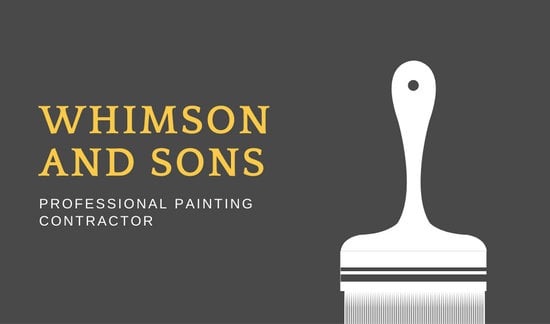Find Out Exactly How Seasonal Elements Influence Business Outside Paint Success And Find The Most Effective Times To Ensure Enduring Outcomes For Your Job
Find Out Exactly How Seasonal Elements Influence Business Outside Paint Success And Find The Most Effective Times To Ensure Enduring Outcomes For Your Job
Blog Article
Short Article Composed By-Regan Urquhart
When you're intending an industrial outside painting task, seasonal aspects can make or damage your results. You'll want to consider how temperature level and moisture effect paint application and drying out times. Choosing the ideal period can guarantee your paint adheres correctly and lasts longer. However which periods are genuinely the very best for this type of job? Let's explore the key elements that can affect your job's success.
The Impact of Temperature Level on Paint Application
When you're intending an industrial exterior paint project, the temperature level can substantially affect just how well the paint sticks and dries out.
Preferably, you intend to paint when temperatures range in between 50 ° F and 85 ° F. If it's as well chilly, the paint might not treat effectively, causing problems like peeling or breaking.
On the other hand, if it's also warm, the paint can dry as well swiftly, avoiding appropriate bond and leading to an unequal finish.
You must additionally take into consideration the moment of day; morning or late afternoon provides cooler temperatures, which can be much more positive.
Constantly examine the maker's recommendations for the particular paint you're using, as they commonly supply guidance on the suitable temperature level range for ideal outcomes.
Moisture and Its Impact on Drying Times
Temperature isn't the only ecological aspect that affects your commercial exterior paint task; moisture plays a significant function as well. High humidity levels can slow down drying out times dramatically, affecting the total quality of your paint job.
When the air is filled with moisture, the paint takes longer to heal, which can bring about concerns like bad adhesion and a greater risk of mildew development. If you're repainting on a particularly humid day, be gotten ready for extensive delay times between coats.
It's vital to keep an eye on local weather conditions and plan appropriately. Ideally, go for humidity levels between 40% and 70% for optimum drying out.
Maintaining these consider mind ensures your project stays on track and supplies a lasting surface.
Best Seasons for Commercial Exterior Painting Projects
What's the best season for your industrial external paint jobs?
Springtime and early loss are typically your best options. During these periods, temperatures are light, and moisture degrees are usually reduced, developing suitable problems for paint application and drying.
Stay linked website of summertime's intense heat, which can create paint to completely dry too swiftly, bring about poor bond and coating. In a similar way, winter months's cold temperatures can prevent proper drying out and healing, running the risk of the durability of your paint work.
Go for days with temperatures in between 50 ° F and 85 ° F for ideal results. Remember to check the neighborhood weather prediction for rain, as wet conditions can spoil your project.
Preparation around these elements ensures your painting job runs efficiently and lasts much longer.
Verdict
In conclusion, intending your commercial exterior paint jobs around seasonal factors to consider can make a considerable difference in the result. By scheduling work during the optimal temperature levels and humidity levels, you'll make certain much better attachment and drying times. browse around this site in mind to keep an eye on neighborhood weather prediction and pick the correct time of year-- spring and early autumn are your best options. Taking these actions will certainly aid you achieve a resilient and expert finish that lasts.
